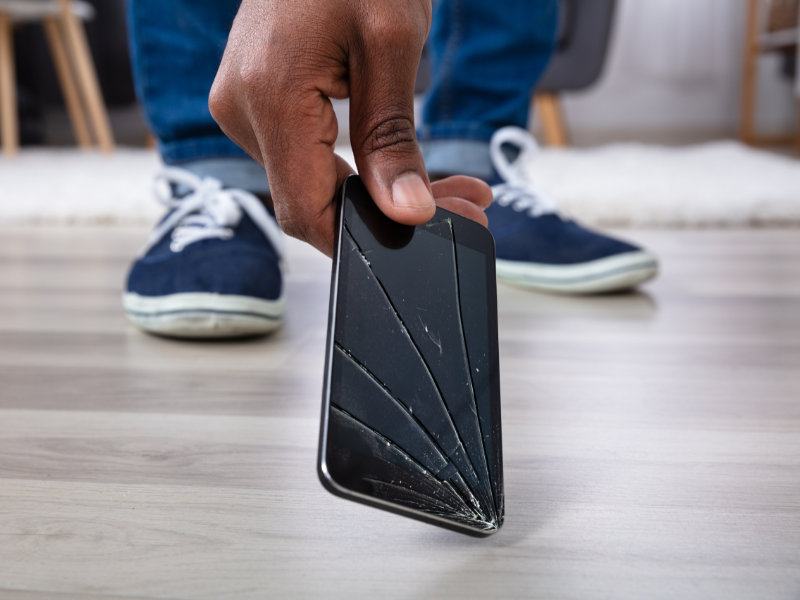
Introduction
Our smartphones have become an essential part of our lives, serving as a communication tool, a source of entertainment, and a hub for various applications. However, accidents happen, and our phones can end up damaged. In this article, we will delve into the assessment of damage to the phone, equipping you with the knowledge to identify and understand common issues that can affect your device. Whether it’s a cracked screen, water damage, or malfunctioning buttons, we’ll provide insights and tips to help you address these problems effectively.
Importance of Assessing Phone Damage

Before we dive into the details, let’s understand why it is crucial to assess phone damage promptly. By identifying and addressing issues early on, you can potentially prevent further damage and save yourself from costly repairs or having to replace the entire phone. Early assessment also allows for quick troubleshooting, enabling you to regain full functionality and prolong the lifespan of your device.
Common Types of Phone Damage
Phones can experience a variety of issues, both visible and internal. Here are the most common types of damage that can occur to a phone:
1. Cracked Screen

A cracked screen is perhaps the most common visible damage faced by smartphone users. Whether it’s a minor hairline fracture or a shattered display, a cracked screen can hinder functionality and compromise the visual experience.
2. Water Damage

Accidental exposure to water can have severe consequences for a phone. Even a small amount of moisture can corrode internal components and cause irreversible damage. Identifying and addressing water damage promptly is crucial to prevent further issues.
3. Battery Issues

Battery problems often manifest as a reduced battery life or unexpected shutdowns. If your phone’s battery drains quickly or fails to hold a charge, it may be time to assess the battery for potential damage or wear.
4. Software Malfunctions

Software issues can lead to a range of problems, such as freezing, crashing apps, or the inability to update the operating system. Assessing software-related damage is vital to ensure optimal performance and security.
5. Charging Port Problems

If your phone is having difficulties charging or connecting to a computer, it may indicate damage to the charging port. It’s essential to assess the port and identify any underlying issues.
How to Assess Phone Damage
The process of assessing phone damage involves a systematic approach to identifying and troubleshooting specific issues. Here’s a step-by-step guide to help you assess damage to your phone:
1. Visual Inspection
Begin by visually inspecting your phone for any external damage, such as cracks, dents, or water exposure. Carefully examine the screen, camera lens, buttons, and ports. Take note of any visible issues as they can provide valuable clues to potential problems.
2. Perform Functional Tests
To further assess the damage, perform a series of functional tests on your phone. Test the display by checking for dead pixels, color accuracy, and touch responsiveness. Verify the functionality of buttons, speakers, microphones, and the headphone jack. Additionally, test the camera, Wi-Fi connectivity, and GPS functionality.
3. Check Battery Health
Evaluate the performance and health of your phone’s battery. Use built-in tools or third-party applications to assess the battery’s capacity, charging speed, and overall health. If the battery shows signs of degradation, it may need to be replaced.
4. Software Diagnosis
If your phone is experiencing software-related issues, assess the operating system and its functionalities. Check for available updates and install them if necessary. Additionally, troubleshoot any problematic apps or settings that may be causing performance issues.
FAQs (Frequently Asked Questions)
Can I fix a cracked screen myself?
Yes, it is possible to fix a cracked screen yourself, especially for phones with easily replaceable screens. Some manufacturers offer replacement kits with detailed instructions. However, it can be a delicate process, and if you’re not confident in your skills, it’s best to seek professional assistance.
What should I do if my phone gets wet?
If your phone comes into contact with water, immediately power it off, remove any accessories, and dry it thoroughly. Do not attempt to charge or turn it on until it’s completely dry. Place it in a bag of uncooked rice or use silica gel packets to absorb moisture. If the problem persists, consult a professional.
Why is my phone’s battery draining quickly?
Several factors can contribute to a quickly draining battery, including background apps, settings, and battery age. Adjusting settings, closing unnecessary apps, and replacing the battery, if necessary, can help resolve the issue. If the problem persists, it may indicate a hardware problem that requires professional assessment.
How can I troubleshoot software-related issues?
Start by clearing the cache of problematic apps and restarting your phone. If the problem continues, uninstall and reinstall the app. If multiple apps are causing issues, a factory reset may be necessary. Remember to back up your data before performing a reset.
Conclusion
Assessing phone damage is an essential skill for any smartphone user. By understanding the common types of damage and following a systematic assessment process, you can effectively troubleshoot and potentially resolve issues. Remember, prevention is key, so take measures to protect your phone from damage and address any issues promptly. Stay informed, stay prepared, and keep your phone in optimal condition for an enhanced smartphone experience.